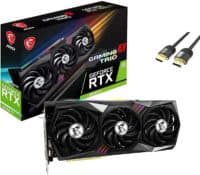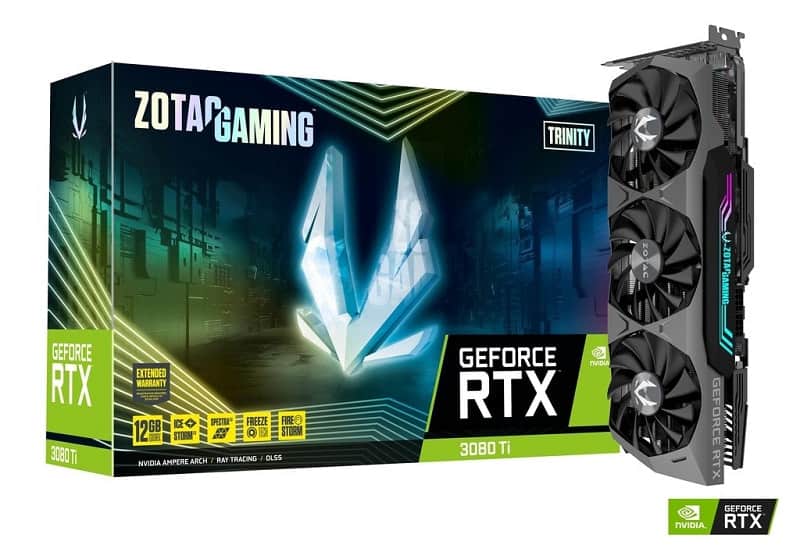MSI GeForce RTX 4070 SUPER 12G VENTUS 2X OC

Small compact form factor with strong performance
Overclocked even in smaller size for higher frame rates
Comes in above the MSRP of the card
Ada goes Super, so how does the RTX 4070 Super compare back to the RTX 3080 Ti?

WePC is reader-supported. When you buy through links on our site, we may earn an affiliate commission. Prices subject to change. Learn more
The range of graphics cards available is always expanding, and having to choose between them might not be so easy, especially with multiple generations and refreshes. So looking at a newer vs older pick we compare the RTX 4070 Super vs 3080 Ti.
The first of the two was obviously the RTX 3080 Ti, part of the Ampere generation that came out in June of 2021. Providing an upgrade to the lineup, whilst the RTX 4070 Super does the same for the Ada lineup. Upgrading the 70 model, it came out in January of 2023 and provided a bit more value to the cars. So how do the two compare and which one is the best GPU to choose?

Small compact form factor with strong performance
Overclocked even in smaller size for higher frame rates
Comes in above the MSRP of the card

Very quiet thermal design
Great build quality
Respectable out-the-box boost clock
3x 8 pin power connectors mean more headroom for overclocking
Classic geometric MSI aesthetic
Generous RGB coverage
The RTX 3080 Ti is a prohibitively expensive GPU
Lies within the higher end of the 3080 Ti price spectrum
Large size vs Founder’s Edition
| RTX 4070 Super | RTX 3080 Ti | |
|---|---|---|
| GPU | AD104-350 | GA102-225 |
| CUDA cores | 7,168 | 10,240 |
| Base clock speed | 1.98GHz | 1.37 GHz |
| Boost clock speed | 2.48GHz | 1.67GHz |
| VRAM | 12GB GDDR6X | 12GB GDDR6X |
| Memory bandwidth | 504GB/s | 912.4GB/s |
| Memory bus | 192-bit | 384-bit |
| Memory clock | 21Gbps | 19Gbps |
| TGP | 220W | 350W |
Comparing the two on the base specs offers some insight into how the 4070 Super vs 3080 Ti compare. But being from different generations does make it a bit less straightforward. Firstly, due to being on a different manufacturing process and architecture. The Ampere of the 30 series is based on Samsung 8nm, whereas Ada in the 40 series goes for TSMCs 5nm. The smaller package and efficiencies improve things greatly and don’t compare one-to-one.
Even still, the 3080 Ti is based on the grander GA102 GPU, compared to the AD104 of the 4070 Super. As such it holds many more CUDA cores, with 10,240 compared to 7,168 respectively, allowing for better processing. Although the generational improvements may provide some boosts in comparison.
When it comes to the clock rate, the new graphics cards bring an overclocked frequency in comparison. With the base clock of the Super higher than even the boost of the Ti, an improvement comes from the process in the card.
But the VRAM setup is quite similar, both utilize 12GB of GDDR6X but differ in what they get out of them. As the 4070 Super only has a 192-bit bus clocked at 21Gbps, that allows for a bandwidth of 504GB/s. However, the 3080 Ti gets a 384-bit memory bus clocked at 19Gbps instead, which nearly doubles the bandwidth up to 912.4GB/s. However that does come at the cost of the power, and the Super is rated at 220W compared to 350W of the Ti, meaning it takes more to run it overall.
For the performance comparison of the RTX 4070 Super vs 3080 Ti, we look to Gamers Nexus and its review of the newer card to see how it stacks up against the older generation. There we can see how the two compare and it does provide a surprise of how they stack up against each other.
There we see what generational improvement and efficiency enables the card to achieve. In Shadow of the Tomb Raider for example, at 1440p the Super averages 16 FPS higher, however, 4K is where we see the memory bandwidth hold back its potential. As the Super pulls back and is 8FPS behind, although still getting a reasonable over 100 frame rate.
In Starfield, the gap is closer at the top resolution as the Super edges ahead by over 1.5. Whilst 1440p it stretches out that lead to 5 FPS, with 1080p jumping up to 8FPS. When introducing ray training the two also stay close together with the memory holding back the Super. At 4k it’s 2 FPS behind, at 1440p it is 0.1 higher, but then at 1080p, the Super leads by nearly 3 FPS.
Comparing launch prices makes it a bit easier to compare the two selections. The RTX 4070 Super vs 3080 Ti is a much cheaper option. The 4070 Super came with a launch price of $599, compared to the RTX 3080 Ti which had a staggering MSRP of $1,199. Even to this day, the 3080 Ti is available at that higher price, and even more, not going down as we’d expect. That means the Super comes in $600 cheaper based on MSRPs.

One of the cheapest RTX 3080 Ti AIBs you will find
Improved cooling solution compared to the Founder’s Edition
Good build quality
The RTX 3080 Ti is a prohibitively expensive GPU
Not the quietest on offer
Less powerful than other RTX 3080 Ti AIBs
Large size vs Founder’s Edition

Large and slim design offers great cooling and performance
A great looking card offering a sleek and strong look
Might not suite everyone and comes in above MSRP
As of its release, the RTX 4070 Super is the better choice over the 3080 Ti. It provides a much better value offering than the 30 series card. The performance of the card is very close to the 3080 Ti although at 4K it might fall behind slightly, it still holds up. Especially as it comes in at a much lower price, the 40 series also brings benefits of DLSS 3, meaning you can enjoy frame generation too. Allowing you to push performance even higher in demanding games like Cyberpunk 2077.